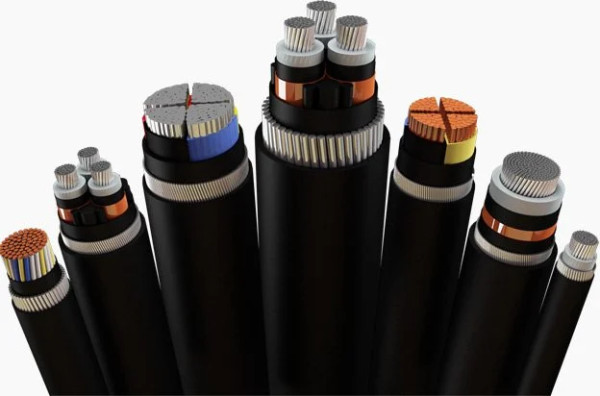In terms of allowable long-term operating temperatures for cable cores, rubber insulation is usually rated at 65°C, polyvinyl chloride (PVC) insulation at 70°C, and cross-linked polyethylene (XLPE) insulation at 90°C. For short-circuits (with a maximum duration not exceeding 5 seconds), the highest allowable conductor temperature is 160°C for PVC insulation and 250°C for XLPE insulation.

I. Differences between XLPE Cables and PVC Cables
1. Low Voltage Cross-Linked (XLPE) cables, since their mid-1990s introduction, have witnessed rapid development, now accounting for half the market along with Polyvinyl Chloride (PVC) cables. Compared to PVC cables, XLPE cables exhibit higher current-carrying capacity, stronger overload capabilities, and longer lifespans (PVC cable thermal lifespan is generally 20 years under favorable conditions, while XLPE cable lifespan is typically 40 years). When burning, PVC releases copious black smoke and toxic gases, whereas XLPE combustion doesn’t produce toxic halogen gases. The superiority of cross-linked cables is increasingly recognized by design and application sectors.
2. Ordinary PVC cables (insulation and sheath) burn quickly with rapid sustained combustion, exacerbating fires. They lose power supply capability within 1 to 2 minutes. PVC combustion releases thick black smoke, leading to breathing difficulties and evacuation challenges. More critically, PVC combustion releases toxic and corrosive gases like hydrogen chloride (HCl) and dioxins, which are the main causes of fatalities in fires (accounting for 80% of fire-related deaths). These gases corrode onto electrical equipment, severely compromising insulation performance and leading to secondary hazards that are hard to mitigate.
II. Flame-Retardant Cables
1. Flame-retardant cables should exhibit flame-retardant characteristics and are categorized into three flame-retardant levels A, B, and C according to IEC 60332-3-24 “Tests on electric cables under fire conditions.” Class A offers the highest flame-retardant performance.
Comparative combustion tests on flame-retardant and non-flame-retardant wires were conducted by the US Standards and Technology Research Institute. The following results highlight the significance of using flame-retardant cables:
a. Flame-retardant wires provide over 15 times more escape time compared to non-flame-retardant wires.
b. Flame-retardant wires burn only half as much material as non-flame-retardant wires.
c. Flame-retardant wires exhibit a heat release rate only a quarter of that of non-flame-retardant wires.
d. Toxic gas emissions from combustion are only a third of those of non-flame-retardant products.
e. Smoke generation performance shows no significant difference between flame-retardant and non-flame-retardant products.
2. Halogen-Free Low-Smoke Cables
Halogen-free low-smoke cables should possess halogen-free, low-smoke, and flame-retardant qualities, with the following specifications:
IEC 60754 (halogen-free test) IEC 61034 (low-smoke test)
PH weighted conductivity Minimum light transmittance
PH≥4.3 r≤10us/mm T≥60%
3. Fire-Resistant Cables
a. Fire-resistant cable combustion test indicators (fire temperature and time) according to IEC 331-1970 standard are 750°C for 3 hours. According to the latest IEC 60331 new draft from recent IEC voting, the fire temperature ranges from 750°C to 800°C for 3 hours.
b. Fire-resistant wires and cables can be classified into flame-retardant fire-resistant cables and non-flame-retardant fire-resistant cables based on the differences in non-metallic materials. Domestic fire-resistant cables primarily use mica-coated conductors and extruded flame-retardant insulation as their main structure, with most being Class B products. Those that meet Class A standards typically employ special synthetic mica tapes and mineral insulation (copper core, copper sleeve, magnesium oxide insulation, also known as MI) fire-resistant cables.
Mineral-insulated fire-resistant cables are non-combustible, produce no smoke, are corrosion-resistant, non-toxic, impact-resistant, and resist water spray. They are known as fireproof cables, demonstrating the most outstanding fireproofing performance among fire-resistant cable varieties. However, their manufacturing process is complex, their cost is higher, their production length is limited, their bending radius is large, their insulation is susceptible to moisture, and currently, only single-core products of 25mm2 and above can be provided. Permanent dedicated terminals and intermediate connectors are necessary, making installation and construction more complicated.
Post time: Sep-07-2023

